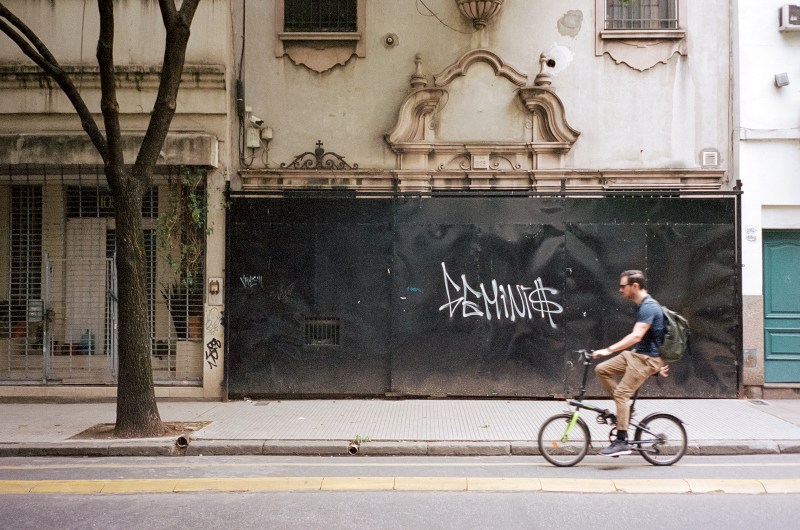Photo Essay: Walking, Biking and Transit in Buenos Aires

Streetsblog Denver editor Andy Bosselman recently traveled to Buenos Aires, Argentina. Check out his photos and observations related to the city’s mobility options.

Buenos Aires devotes enormous space to wide avenues which often spread to six or more lanes. Like in much of the world, its streets are often gridlocked But the city is walkable, bikable and accessible by commuter rail, a six-line subway system and 150 bus lines, according to Wikipedia.



Some of the city’s wide avenues have made room for Bus Rapid Transit, including this station on the 459-foot-wide July 9 Avenue. Buenos Aires launched BRT in 2011. The system has grown to four lines with 113 stations that extend 27 miles. The “surface subway” allows passengers to pay before boarding and enter and exit through all doors. “Level boarding” reduces time buses dwell at stops by allowing people to step or roll on and off the vehicle without a step up.


The Buenos Aires subway, known as Subte, features six subterranean lines. With one overground line, the system features 100 stations across 37 miles of track. The city had an extensive network of tramways which were dismantled in the 1960s. Today, some tram lines are being restored.


The Buenos Aires commuter rail system has seven lines that allow 1.3 million people to commute into the city daily. Commuter trains also connect to the country’s long-distance rail system which travel to Rosario, Córdoba and other cities.
I took a one-hour commuter trip from the city center to Tigre for a fare of around $1.23.

The city’s free bike share program launched in 2010. It features 31 stations and around 850 bicycles.


Since 2009, Buenos Aires installed 121 miles of protected bike lanes, according to the Ammanik travel service. The level of bicycle traffic is nothing like in Copenhagen. But when you come across a bike lane, a few cyclists always seem to be using it.





Many Buenos Aries sidewalks are very narrow, some are in poor repair. But the city’s “Eclectic European” architectural styles, murals and street life make it a great place for walking.





The city’s skyline is dotted with hundreds of high-rise buildings, including in the fast-developing waterfront Puerto Madero neighborhood.

An Argentine steak and glass of Malbec were a key part of the trip, which I followed with a traditional serving of Yerba Mate.
Streetsblog Denver needs your support. Give $5 per month.


